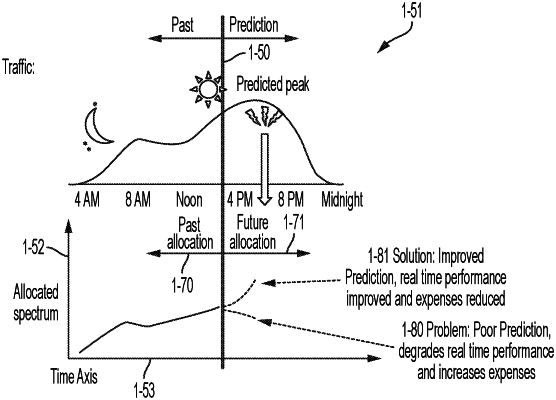| CPC H04W 16/22 (2013.01) [H04W 16/18 (2013.01)] | 20 Claims |

|
1. A server configured to manage traffic prediction model transfer learning among 5G base stations, the server comprising:
one or more processors; and
one or more memories, the one or more memories storing a program, wherein execution of the program by the one or more processors is configured to cause the server to at least:
receive a first plurality of base station statistics, wherein the first plurality of base station statistics includes a first data set of a first size from a first base station;
receive a second plurality of base station statistics, wherein the second plurality of base station statistics includes a second data set of a second size corresponding to a second base station;
select the first base station as a source base station;
train a similarity network;
receive a source prediction model from the first base station and an importance score matrix;
receive a prediction model request from a target base station, wherein the target base station is the second base station;
compute a first similarity using the similarity network;
obtain a first scaled importance score matrix based on the importance score matrix and based on the first similarity; and
send the source prediction model and the first scaled importance score matrix to the second base station,
whereby the second base station is configured to use the source prediction model, and the first scaled importance score matrix to generate a target prediction model and predict radio system parameters relevant to the second base station, wherein the radio system parameters include a future value of user data traffic passing through the second base station.
|